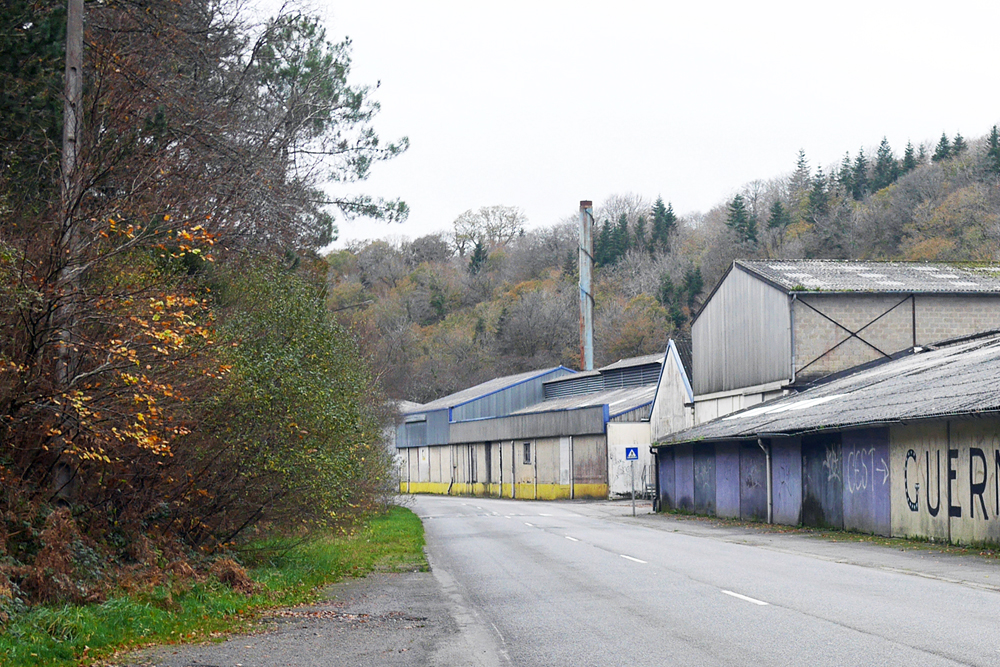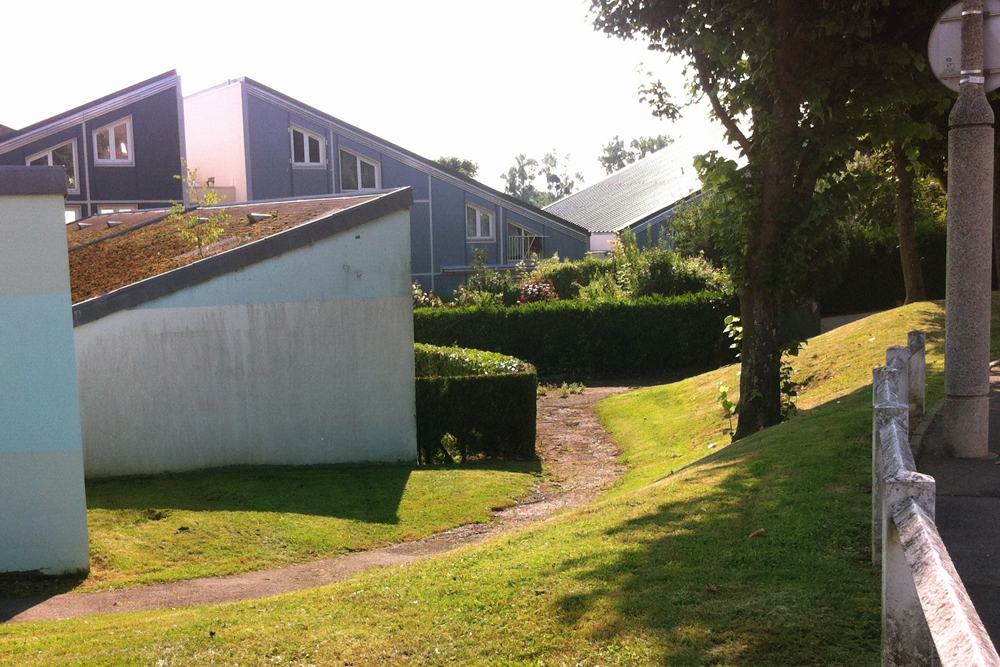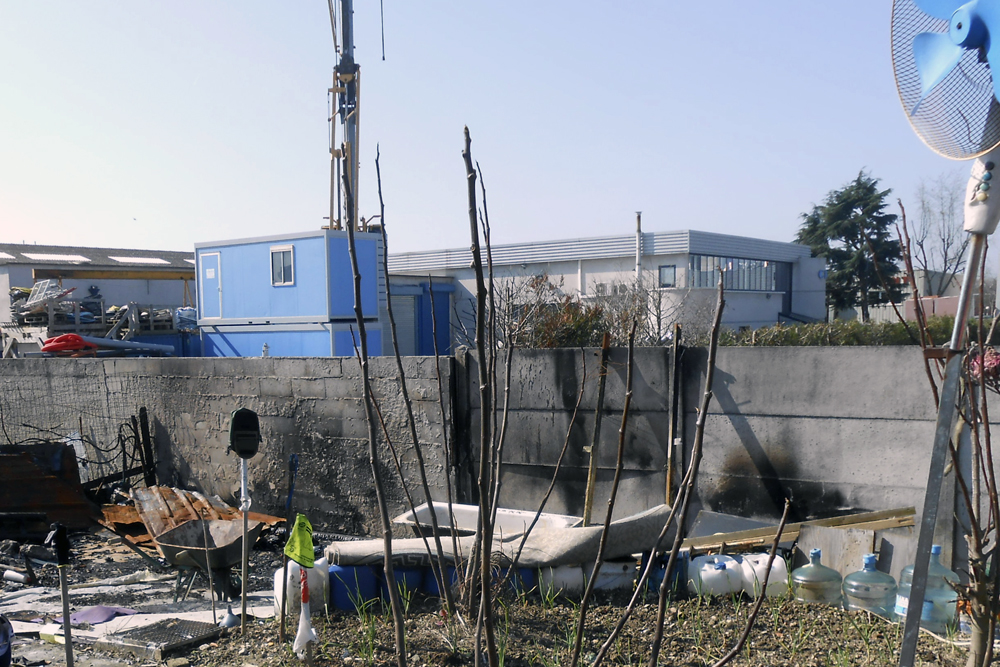WHY DOES THE LIVING CITY NEED SPACE?
Alain Maugard (FR)
Civil engineer, Europan France President
with Isabelle Moulin (FR), architect, Europan France general secretary and Louis Vitalis (FR), architect, teacher, Europan France project manager
This article, written on the occasion of the launch of Europan 16,questions what the Living Cities of tomorrow will be like. Without providing turnkey solutions, he rather proposes the idea of a living space as a way of questioning certain obvious facts: what space does the city need for its vitality?
Why does the living city need space?
or some controversies around tomorrow’s Living Cities
This text has been hatched in the context of post-Covid changes and their potential ecological consequences for urban design and architecture. There are certain ideas, not necessarily new, that are now coming into their own and under the spotlight of debate. There are questions to be asked: will stopping the artificialisation of land surfaces (the French government’s “zero artificialisation” target) necessarily bring greater biodiversity? Is the city always hostile to nature? Does the emphasis on density preclude the presence of spaces of freshness and nature in the city? Are lifestyles based on the ecologically problematic use of the car the consequence of the quest for well-being through proximity to nature?
These questions seem an essential part of any attempt to think about tomorrow’s Living Cities. Nonetheless, we don’t believe that there is a solution, or at least a readymade or obvious solution. Instead, there is a set of tensions between values and possibilities for action, praiseworthy goals that become problematic once converted into planning tools, shared intentions that generate conflict once transposed into real-world projects… This text seeks to expose these areas of dissension, without claiming to provide a definitive answer. Instead, we put forward the idea of a vital space in the city as a way to question certain assumptions: what space does the city need for its vitality?
1. NATURE VS. BIODIVERSITY
Let us start with the idea that biodiversity is not only found in nature, but that there is also a specific and demonstrable urban biodiversity (see the book by Philippe Clergeau, Urbanisme et biodiversité, or else Emelyne Bailly, Dorothée Marchand and Alain Maugard, Biodiversité urbaine, pour une ville vivante). From there, let us extrapolate from the life sciences the idea of a vital space, or vital domain, in the city. This entails thinking about the city as a whole, including the living space that enables the city to flourish. An obvious example is space to grow vegetables for a more self-sufficient city. Sure, but shouldn’t we talk about biodiversities in the plural? Agriculture can be a source of biodiversity, but not always: there are vast farmlands in the Beauce that are factories of monoculture with very little biodiversity. Ditto for the plantations of Douglas pine produced by intensive forestry. Conversely, the city can – under certain conditions – admit a specific form of biodiversity. As evidenced by the obvious quality of urban honey. None of these biodiversities is a foregone conclusion, each brings its own tasks and challenges.
Rather than enclosing the city in a rigid boundary, the aim is to give it room and to let nature take its place in disparate spaces. What are the city’s vital spaces? In addition to market gardens, urban woodlands offer breathing spaces that contribute to psychological and social well-being. Managing the elements also plays a full role in these vital spaces: rivers and their catchments, the water cycle, the air we breathe, soils and their geologies. And then there is energy: what biodiversity does a hydroelectric dam, a windfarm or a solar array, permit or preclude? To examine these questions, we need to rid ourselves of the binary opposition between nature and technology.



2. DENSIFICATION VS NON-ARTIFICIALISATION
If we have to avoid galloping artificialisation, is a denser urban fabric the only solution? A first option would then be to imagine that biodiversity would be better served by contrasting developments, different forms of density: density of construction offset by density of vegetation. In this respect, big metropolitan centres have not been slow to cultivate niches of biodiversity and original combinations of species. Does that mean that our cities need to expand further? Stopping artificialisation also raises the question of how to do things differently. Not artificialising does not necessarily mean densifying. So much the better, since the smattering of islands of freshness that exist in the big cities are probably vital to them. Another question is what we consider to be “artificialised”. The sealed surfaces of business parks, car parks and shops are not densely constructed spaces. On the other hand, increasing density on a site that is already urban and lively does not obviously produce the same benefit.
Finally, let us not be too quick to discard density in the city. It facilitates the pooling of many services, it fosters community spirit in residential areas and potentially releases land for other purposes. Here again, in France, in loyalty to the same commercial and carbonaceous ideal of 20th-century urban growth, we rejected the urbanism of the city in the countryside, an approach sometimes espoused in the design of the big housing estates of the Reconstruction era. Let’s not forget Team Ten… Such estates usually include big open spaces for the use of residents, and the buildings can often be converted to create an attractive and pleasant environment for living and sharing, with generous communal areas… Project developers have proved that it is possible to handle them in an exemplary way, avoiding the commercial approach to the production of the city. (Cf. Aquitanis in Bordeaux and Paris Habitat porte Pouchet, two refurbishment/conversion projects by the architects Lacaton&Vassal).



3. URBAN SPRAWL VS. GARDEN CITY
While we argue for more space for nature to take its place within the urban fabric, this space should not be used just anyhow. In the history and geography of the 20th-century city, there is an in-between urban fabric, a tissue that is not dense but loose and sprawling, the city of the car, which is largely responsible for the artificialisation of the urban surface, with its corollary of shopping malls, roads, roundabouts, car parks… and modern human isolation. Between stopping artificialisation to protect the countryside and de-densifying to repair the cities, there is this challenge of fixing this in-between space, these periurban areas. These zones, promoted in the 20th century and the early 21st century as the French ideal (house, garden, garage) correspond to a certain ideal of the minimum space, or perhaps of vital family space… and space that is unrestricted… except economically: a three-car family’s life is costly in trips and in carbon, to the commons and to social life.
The vital urban space we want to talk about is the space of vitality, a new ideal that has left traces and a whole utopian urban culture of the city: both dense and communal, open and protected, and above all with a commonality of hierarchically ordered spaces: gardens, parks, alleyways, pathways inserted into the city, linked to public transport… This is the Garden City. It is a mix of housing for all and large communal spaces, proportioned to the communal buildings. It offers the possibility of generating community life at the small scale, of neighbourhoods connected to the city and – why not – to the countryside as well.
Europe has examples of model neighbourhoods (currently under threat like La Butte Rouge in Chatenay Malabry), in Berlin (Britz), Brussels, Paris, Rome (Garbatella), often menaced by land speculation… It is urgent to revive this form of urbanism, with adjustments to contemporary lifestyles: livable homes, larger sizes, a variety of typologies, possibly community land ownership. A modern model of the garden city could take over the suburbs…
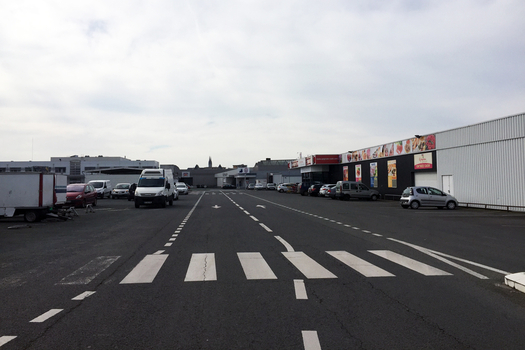


4. DENSITY VS DISTRIBUTION
The consequences of densifying the urban fabric are different in a city than in a small town. The quest for infill in hyperdense cities only seems pertinent from a less and less tenable economic perspective. Densifying mid-sized cities that are already slightly overcrowded can hamper the development of contemporary ways of life (real estate costs, neighbourhoods and communities, home-based activities…). On the other hand, greater density in an isolated town can bring services that shorten car journeys. But here, it could be that to “densify” at the scale of an isolated village is the same thing as to de-densify the urban region that this village belongs to… everything depends on what we mean by densifying and its scale.
Or perhaps we should talk about distribution, as Antoine Bres suggests in an article criticizing the densification dogma? (Faire durablement territoire sans densifier les villes - 2020) In other words, the scattering of populations and urban centres across regions. The car is often taken to be the ultimate ecological evil, whereas it opens access to ways of life that involve market gardens and therefore short supply chains. It is not certain that we have a clear vision of the hierarchy of ecological evils, especially as they are entangled, not only with each other but with possible remedies. Is mobility the norm, a right to be enjoyed, even a form of leisure… or is it the territory that forces people to drive? If services are loosely distributed, the system forces people to use some form of transport, and the more centralised the system, the more carbon-intensive the transport. The idea of density encourages us to think that transport infrastructure nodes should be places of clustering to avoid the proliferation of unnecessary transport. But what about transport provision to the remote outskirts and rural areas on the margins of the network? Distributed populations, especially in small towns and villages, can be a factor of territorial vitality. The idea of a city’s vital space is extended to the point that the “city” is redistributed into a fine, granular form.

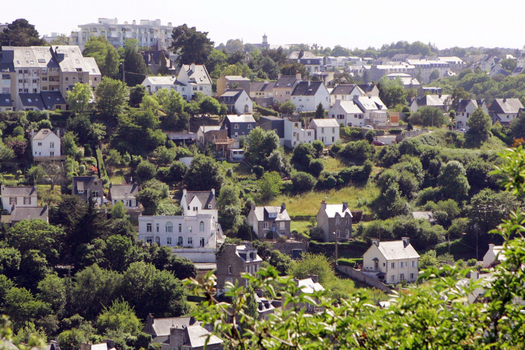

5. LIMITS VS CORRIDORS
We have put forward the idea of a vital space, but the goal is not a normative space that will be the same in every city. Let’s imagine a multiplicity of vital spaces that depend on the specificity of the locality. A city’s vital spaces allow or prevent certain actions, they are capacities made available to their human and nonhuman inhabitants. Vital spaces can also be envisaged at several scales: the anthropologist Edward T. Hall encourages us to differentiate between intimate, personal, social and public spaces. This is how – from balcony to urban woodland, from street to square – the architecture of the city can accommodate metabolically complex vital spaces. So where do we draw the limit that we would like to impose on urban sprawl? The duality between natural and artificial seems to be breaking down, both in our concepts and in our physical spaces… especially if we consider that the issue is less the size of these spaces than the connections between them.
In order to foster biodiversity, we need to tackle it in depth, in length and in continuity: natural corridors are essential to species that are nomadic or have large territories; variety of flora is indispensable to variety of fauna; in the city, where there are many private gardens, wildlife can return and settle, adapt like foxes or small mammals; insects too: who would have thought a few years ago that it would be possible to produce honey in Montreuil, at a time when it is under threat in farming regions? Stopping “artificialisation” is not just about asphalt, but also natural land that may not always be well served by agriculture.
The idea of ecological corridors shows the need for movement. Biodiversity in a sense needs to be fed, and here form counts, not just the quantity of species and spaces. What if we planned corridors for natural and artificial continuities… or even a corridor of ideas that we could use to move between binaries?



6. VITALITY VS VELOCITY
Viewed narrowly, vital space is perceived as a minimum, to be kept for oneself. However, just as animals share their territories, cities have the capacity to pool their vital areas. This is an opportunity for collaboration, not just competition, between cities. The theory of evolution, having long emphasised competition, is increasingly looking at collaboration between species as a factor of survival and development. It could be that Nantes and Rennes, Metz and Nancy, are cases where reciprocal cooperation could be reinforced.
However, the vital spaces of the city are not places to be consumed and exploited by human cityfolk. Waste needs to be part of the picture as a necessity of urban metabolism rather than a question to close our eyes to and shift elsewhere (to the neighbour, into the sea, underground…). Incorporating waste into the vital space of the city, without perceiving it as a form of loss, requires us to consider material and organic cycles and their reintegration into positive performance and a circular economy. In this balancing act, we also need to think about the whole dynamic of territories in motion, with their slow timescales and alterations. Urban spaces don’t need to make it their goal to be perpetually the receptacles of frenetic intensity… they can also allow for fallow times, times of fertilisation and maturation. Sonia Lavadinho encourages us in her contribution to the Europan 16 theme (Living Cities) to open up, to let other actors speak, to take a few steps sideways or back… rather than always to keep running. So there can also be an element of slowness in vitality.
In our desire for speed, have we not reduced housing to a purely economic product? This means that a vast deal of urgent thinking needs to be done about living space, to move away from housing as a product, and return to the idea of habitat, today’s habitat, the habitat of sharing and community as well, of intergenerationality, of caring, of pooling, of energy efficiency, of recycling… the list is long and rich with potential projects.



Controversies & projects
We hope that this introduction will contribute to the debate around the protection of biodiversity and the excessive artificialisation of urban surfaces. There is no need to impose an endpoint on these controversies, nor to choose a path. It is more about living with them.
We bring to the urban question a new dimension drawn directly from recent sessions of Europan (Adaptable Cities, Productive Cities), which have led to the emergence of the notion of the Living City (the theme of this session). If –as we believe– the city is a living entity, we need to think about its vital space so that we can live both together and with the nature of which we are also a part.
Architectural, urban and landscape projects are situated ways through which to pursue the debate. What answers can we find to these complex questions? How can a particular territory find its way through these entangled issues? What forms and what spaces can manage these tensions?


